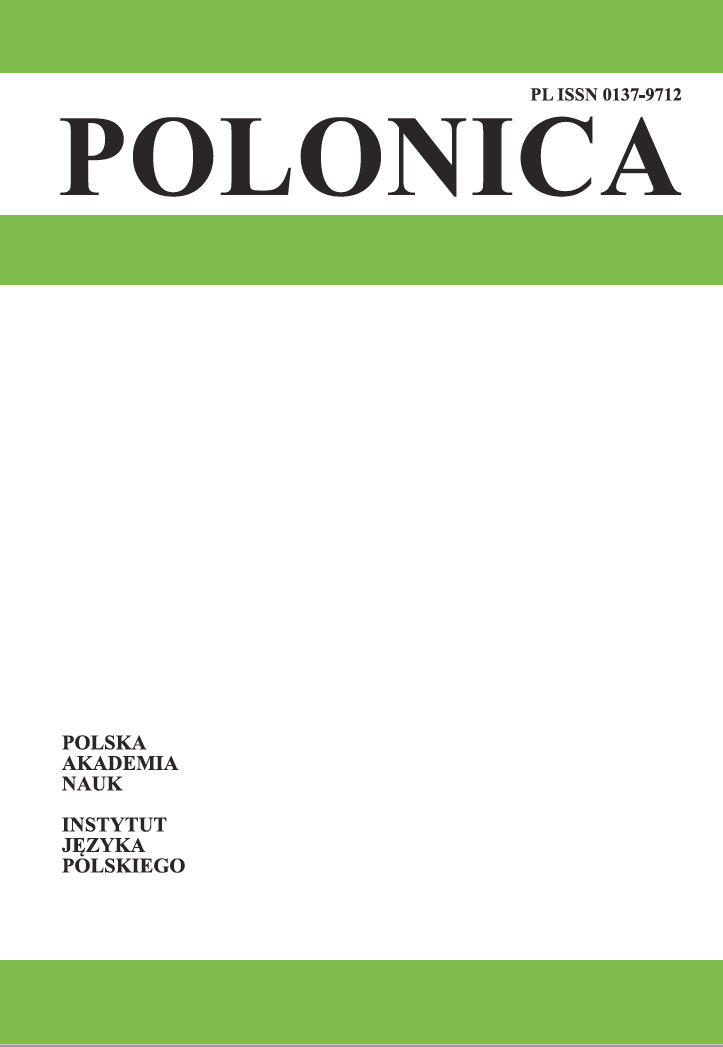Abstrakt
The topic of this article is an overview and partial analysis of ways of marriage conceptualisations in Holy Scripture and Polish Wedding Homilies. Basing her observations on more than 50 homilies the author tries to show, firstly, how creators of homilies talk about the marriage and whether they use biblical conceptualisations of marriage or they propose their own marriage metaphors. Secondly, the author tries to discover what is the reception of those conceptualisations – both creative and derived from Holy Scripture (and if that is the case, the author checks whether this biblical provenience is recognisable and understandable). The chosen ways of conceptualisation of marriage are being analised in the article, using tools of cognitive linguistics – mainly cognitive theory of metaphor and theories of conceptual integration theory and conceptual blending.
Bibliografia
Black M., 1962, Models and metaphors, Ithaca.
Black M., 1979, More about metaphor, [w:] Metaphor and thought, red. A. Ortony, Cambridge, s. 19–43.
Bower G.H., Black J.B., Turner T.J., 1979, Scripts in memory for text, Cognitve Psychology 11, 177–220.
Dobrzyńska T., 1994, Mówiąc przenośnie… Studia o metaforze, Warszawa.
Dupré L., 2003, Inny wymiar. Filozofia religii, tłum. S. Lewandowska-Głuszyńska, Kraków.
Evans V., 2009, Leksykon językoznawstwa kognitywnego, tłum. M. Buchta i in., Kraków.
Fauconnier G., Turner M., 1998, Conceptual integration network, Cognitive Science 22–1; 133–187.
Fauconnier G., Turner M., 2000, Compression and global insight, Cognitive Linguistics 11–3/4; 283–304.
Fauconnier G., Turner M., 2001, Tworzenie amalgamatów jako jeden z głównych procesów w gramatyce, tłum. W. Kubiński, D. Stanulewicz, [w:] Językoznawstwo kognitywne II. Zjawiska pragmatyczne, red. W. Kubiński, D. Stanulewicz, Gdańsk, s. 173–211.
Fauconnier G., Turner M., 2002, The way we think. Conceptual blending and the mind’s hidden complexities, Nowy Jork.
Jan Paweł II, 1991, Mulieris dignitatem. List apostolski o godności i powołaniu kobiety, [w:] Posoborowe dokumenty Kościoła katolickiego o małżeństwie i rodzinie, t. 1, Kraków, s. 345–354.
Jan Paweł II , 2008, Mężczyzną i niewiastą stworzył ich, Lublin.
Lakoff G., Johnson M., 1988, Metafory w naszym życiu, tłum. T. P. Krzeszowski, Warszawa.
Libura A., 2000, Wyobraźnia w języku. Leksykalne korelaty schematów wyobrażeniowych centrum-peryferie i siły, Wrocław.
Libura A., 2007, Amalgamaty kognitywne. Powstanie i rozwój koncepcji integracji pojęciowej, [w:] Amalgamaty kognitywne w sztuce, red. A. Libura, Kraków, s. 11–66.
Libura A., 2010, Teoria przestrzeni mentalnych i integracji pojęciowej, Wrocław.
Makuchowska M., 1995, Styl religijny, [w:] Przewodnik po stylistyce polskiej, red. S. Gajda, Opole, s. 449–473.
Mandler J.M., 2004, Opowiadania, skrypty i sceny: aspekty teorii schematów, Kraków.
Pismo święte Starego i Nowego Testamentu, 2009, Częstochowa.
Richards I.A., 1950, The philosophy of rhetoric, Nowy Jork-Oksford.
Romaniuk K., 1994, Małżeństwo i rodzina według Biblii, Warszawa.
Sarmiento A., 2002, Małżeństwo chrześcijańskie, tłum. P. Rak, Kraków.
Schank R.C., Abelson R., 1977, Scripts, plans, goals and understanding, Nowy Jork.
Sztajer S., Rola języka w konstytuowaniu religijnego świata, Przegląd Religioznawczy 4 (218), s. 33–44.
Taylor J.R., 2001, Kategoryzacja w języku, tłum. A. Skucińska, Kraków.
Taylor J.R., 2007, Gramatyka kognitywna, tłum. M. Buchta, Ł. Wiraszka, Kraków.
Wielki Słownik Języka Polskiego PAN (WSJP), red. P. Żmigrodzki i in., (http://wsjp.pl)

